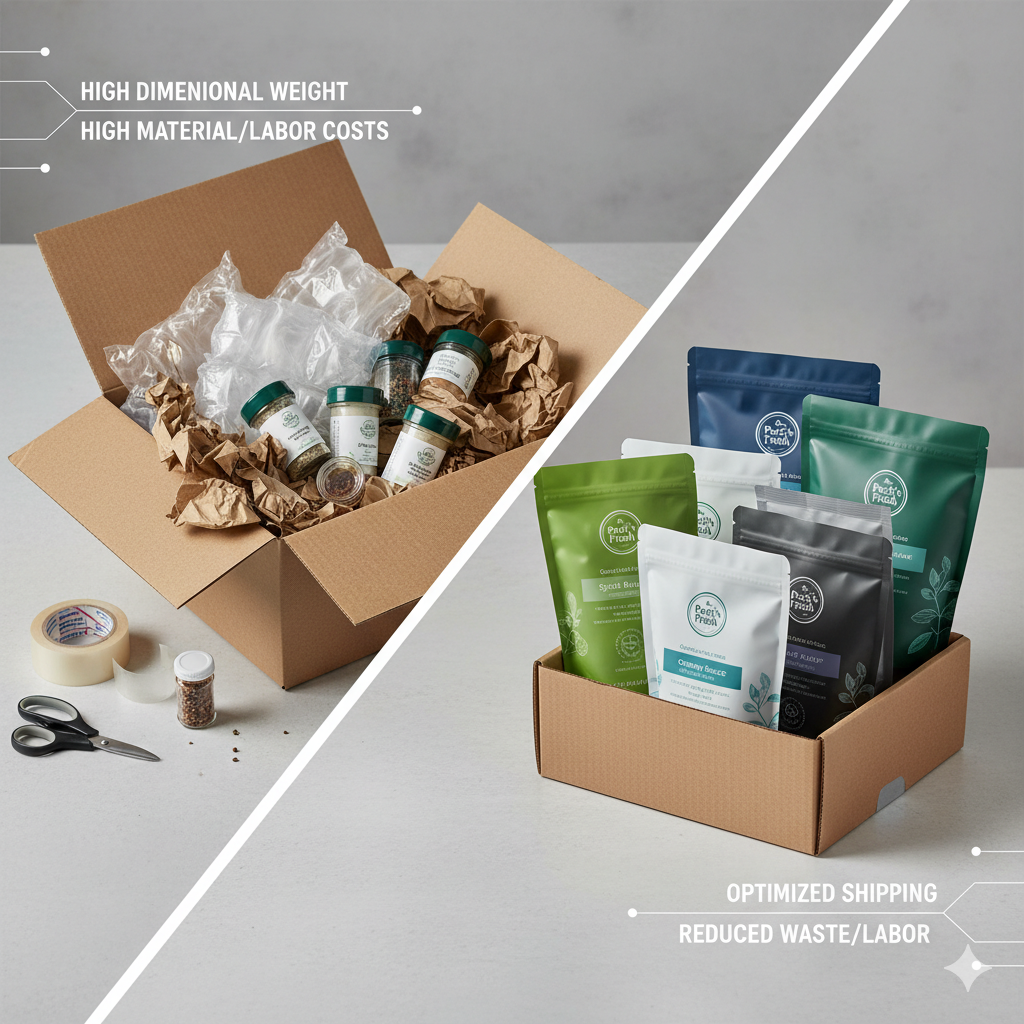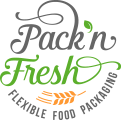
The Critical Mistake in Calculating Meal Kit Packaging Cost
When meal kit founders calculate their meal kit packaging cost, they almost always make one critical mistake: they only look at the per-unit cost of the outer box. The truth is, your meal kit box isn’t your product; it’s the shipping container. The *real* cost is a complex bundle of materials, freight, labor, and even the customer’s experience.
For years, the standard corrugated box was the default. But as the market matures and margins get tighter, savvy brands are realizing that boxes are heavy, bulky, and shockingly expensive to ship. The strategic shift to lightweight, flexible pouches for the ingredients *inside* the box isn’t just a trend—it’s a critical, data-driven, cost-saving measure. Let’s break down the true cost comparison.
1. The “Dimensional Weight” Shipping Trap
Freight carriers like FedEx and UPS don’t just charge for how much your box weighs; they charge for how much space it takes up. This is called dimensional weight (DIM), and it’s the single biggest hidden fee in the meal kit packaging cost structure.
The Box Problem: You Are Paying to Ship Air
A large, half-empty box filled with smaller rigid containers (jars, tubs) and void-fill (like bubble wrap or crinkle paper) costs a fortune. That 1 oz of spice in a 4-inch-tall plastic jar, surrounded by 6 inches of air-filled pillows, might be billed as 2 lbs by the carrier. You are literally paying freight charges for empty space.
The Pouch Solution: Slashing DIM Weight
Flexible pouches are form-fitting and lightweight. They allow you to pack all your ingredients into a much smaller, denser final box. This single change can slash your DIM weight costs by 20-30% or more, which are often the most expensive part of your fulfillment budget.
2. The Hidden Labor and Material Costs
The cost of the box itself is just the beginning. The real cost is the “ecosystem” of packaging needed to fill it.
The “Packaging Avalanche” Problem
A typical meal kit box requires an entire team of other packaging: the outer box, tape, void-fill, and separate rigid containers (plastic tubs, clamshells, jars) for every single spice blend, sauce, or chopped vegetable. Your team (or co-packer) has to source, store, and manually assemble all these different pieces. This is a DIY packaging nightmare that multiplies your SKUs and labor costs.
The Pouch Solution: Consolidation
A turnkey co-packer specializing in pouches (like Pack’n Fresh) consolidates this entire, complex process. We source the high-barrier film, blend the spices, and automatically portion, pack, and seal the finished, branded ingredient. Your “packaging” for that ingredient becomes a single, pre-portioned item. This dramatically cuts down on material SKUs, storage needs, and the expensive labor time required for manual kitting.
3. The Customer Experience Cost: A Bad Unboxing
Don’t underestimate the long-term financial cost of a bad unboxing experience. It directly impacts customer loyalty and repeat purchases.
The Box Problem: Wasteful and Frustrating
Customers are growing tired of the “packaging avalanche.” They are left with a mountain of non-recyclable plastic tubs, a bulky box to break down, and plastic air pillows that fill their trash can. It’s wasteful, feels cheap, and creates a negative brand association—a significant hidden cost.
The Pouch Solution: Premium and Sustainable
High-quality, custom-printed pouches create a premium, organized, and professional experience. The customer receives a neat, easy-to-open set of ingredients that feel thoughtfully prepared. It reduces household waste, reinforces the value of your brand, and makes the customer feel good about their purchase—leading to better reviews and higher retention.
The Verdict: Where Pouches Win the Cost Battle
Boxes still have their place—as the final *shipper*. But for packaging the *actual ingredients*—especially small-format items like spices, sauces, grains, and powders—pouches are the undisputed financial winner. Analyzing the total meal kit packaging cost reveals a clear picture:
- Lower Freight Costs: Pouches slash DIM weight, saving you money on every single order.
- Lower Material Costs: They eliminate the need for a separate tub, jar, lid, and void-fill for each item.
- Lower Labor Costs: Automation replaces slow, expensive manual kitting.
- Higher Brand Value: A premium, sustainable unboxing experience leads to higher customer loyalty.
Calculate Your True Meal Kit Packaging Cost
Ready to see how much you could save by switching to a turnkey pouch packaging system? Pack’n Fresh specializes in high-quality, < 2lb pouches for meal kit companies. Contact us for a free, detailed cost analysis.
